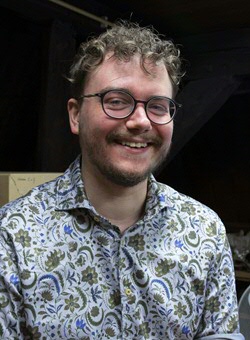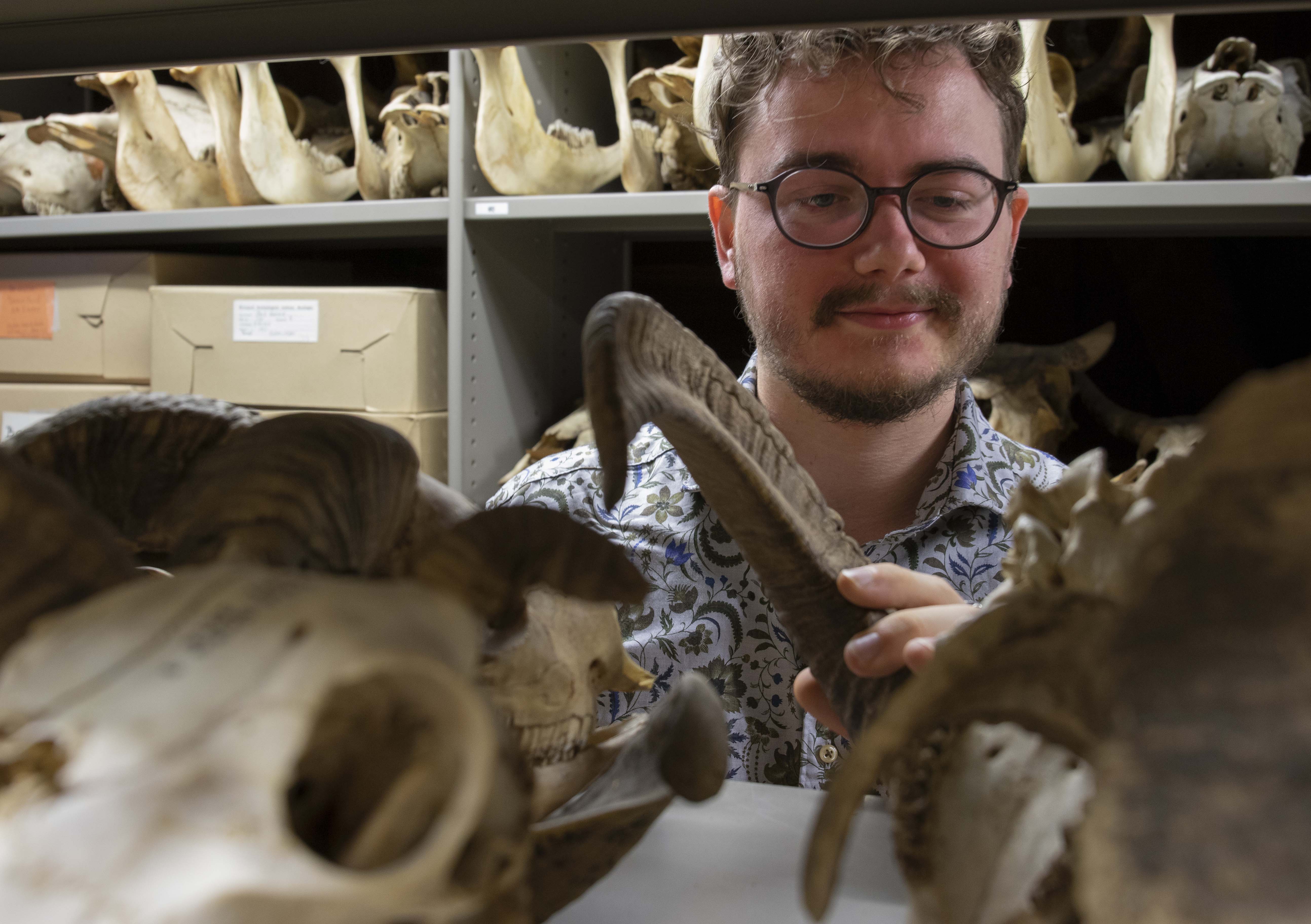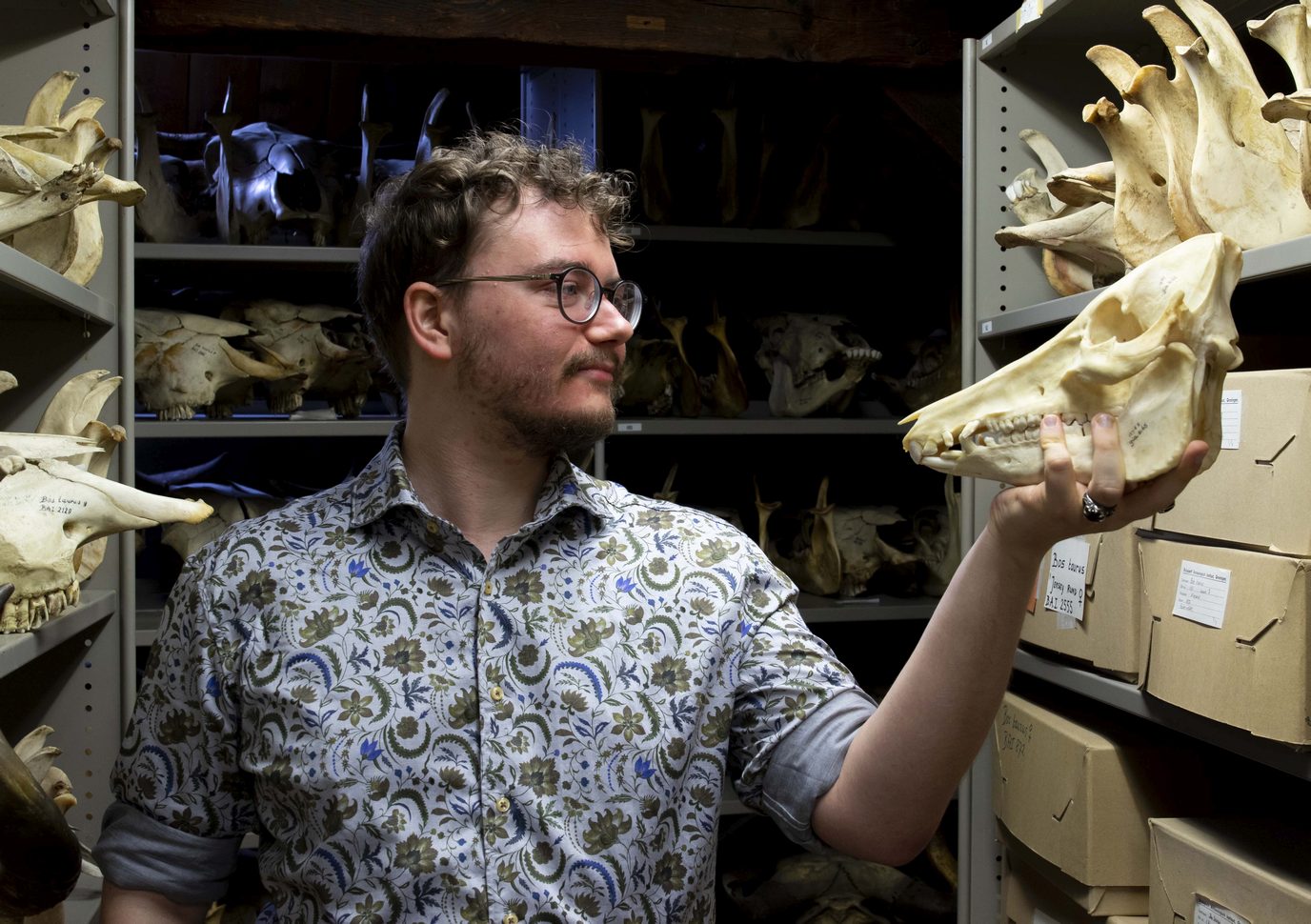Medieval animal trials: like animals?

Snails being solemnly banished for nibbling too much on the crops of the inhabitants of Autun, France. Dolphins, horses, moles, and flies being sentenced in court. Sven Gins investigates these kinds of medieval animal trials. We might have World Animal Day and a Party for the Animals in the Dutch House of Representatives, but are we really more humane? ‘Medieval people would probably be just as shocked to see how we treat animals in the bio-industry and in nature.’
Text: Gert Gritter, Communication Office UG / Photos: Hesterliena Wolthuis
Beetle plague
Someone dies from a bee sting: the bee colony is sentenced to death by suffocation (Worms, Germany, 864). A child perishes on account of a sow: the pig is sentenced to being hung upside down until death ensues. During a beetle plague, a debate arises as to whether the insects can be excommunicated (Saint-Julie, France, 1587). A child dies from the consequences of a dog bite: the dog is sentenced to the gallows and its few belongings confiscated (Leiden, Holland, 1595). In Europe, from Antiquity to the Renaissance, animals were regularly put on trial, either individually or as a group. Such cases may seem ridiculous or amusing to us, but in those days, they were serious matters, extensively debated by legal experts, and a good source of income for court officials, lawyers, and executioners.
Curse
In cases where an animal appeared before an ecclesiastical court, the punishment could amount to suffering a curse. In a secular court, however, ‘the suspect’ would face more gruesome prospects. Animals were hung, strangled, buried alive, tortured, burned, or beheaded. For Gins, the rarity of these court cases does not make the reality of the animals’ sentences any less unsettling. ‘Hanging a living pig upside down until death ensues must have been unbearably painful for the poor distressed animal.’

Disruption of the world order
Based on his current Dutch Research Council (NWO) research at the Faculty of Theology and Religious Studies, Gins has gained more insight into such animal trials. ‘Medieval people were not stupid. They were ordinary people, like you and me. Clearly, they knew that animals had no idea of what was discussed in court, let alone that they had any sense of guilt or repentance. They did, however, believe in a strict world order, in which humans occupied a fixed position above animals. Such trials took place among other things when this presumed order had been disrupted. A pig “was not supposed” to kill a human, so when it did happen, prosecuting and punishing the animal was a ritual attempt to restore rightful hierarchy. This arose from the need to do “something”, but people also took practical measures. Witnesses were interrogated to unmask potential malicious intent, and a growing number of cities banned pigs from roaming the streets freely.’
Acquittal of rats
‘In addition, the medieval culture and society were extremely religious. If people could not eradicate harmful insects or rodents with practical measures, they used ecclesiastical trials to ask the Almighty for help. In addition, animal trials gained momentum on their own, especially after the Middle Ages, in the sixteenth and seventeenth centuries. For legal experts, prosecutors, and lawyers, this was one way to make their mark, to demonstrate their cleverness and persuasiveness. A good example is Barthélemy Chasseneux, who managed to have his clients – a group of rats who had feasted on some crops –discharged. He argued that it was too difficult and dangerous for the rodents to appear in court. Animal trials brought him name and fame.’
Wonder park
What is interesting is how very different the medieval perspective on animals was from our own (based as it is on our present understanding of natural evolution and biological processes). Gins: ‘People saw animals more as a kind of machine, a robot, which was expected to function as the Great Inventor had programmed it. There was no place for “defective” animals, that did not behave as prescribed, in the human world. It is no surprise that medieval people were so passionately interested in mechanical animals, which were ingeniously designed. Royal courts vied with each other to impress their guests and the wider public. One famous example was the Burgundian wonder park of Vieil-Hesdin, with water-spouting sculptures, mechanical birds that fluttered and sang, and robot monkeys that could hardly be distinguished from real ones. Very impressive.’

The Dark Ages
What does Gins, as a medievalist, think of the prevailing image of the Middle Ages as ‘the Dark Ages’, filled with stupid and barbarian people? An image that is fed by novels and series such as Game of Thrones, that take place in a kind of pseudo–Middle Ages. He smiles. ‘I am a big fan of fantasy as a genre. The fact that the popularity of such stories leads to more interest for my field – itself a kind of endangered species – can only be good news.’ More seriously: ‘We should not be so quick to condemn medieval people. They were living with and among their animals, which often roamed freely. They knew the bloody price animals paid for human survival. The slaughtering of animals happened in public; it was an integral part of life. From an animals' perspective, our modern age is the real dark age; look at how we treat animals in the bio-industry, with massive preventive culling and slaughterhouses hidden away on industrial sites. The people of tomorrow will undoubtedly think of us as barbarians.’
A new story
What prompted Gins to focus on this topic in particular? ‘I am intrigued by the eccentric, by themes that touch on existential questions about what it means to be human. By how apparently marginal areas of history can throw a new light on what we know.’ Did his love for animals perhaps also play a role? ‘I am not a born activist, but the subject certainly does not leave me cold. It has given me, and hopefully others too, food for thought. History is more than just the reconstruction of historical facts. It is also about the stories we tell about who were and who we might be.’
